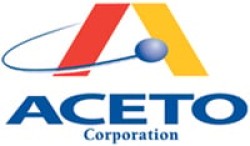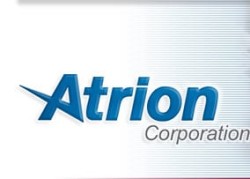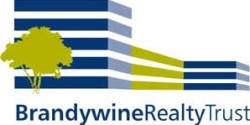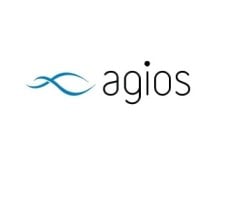Following a strong July, investors should feel cautious heading into August. Historically, it has been one of the worst months of the year for major indices, with steeper losses especially in mid-term years.

Source: Shutterstock
A day after the United States and China were pursuing talks to stave off a trade war, things have also started going haywire. President Trump is now planning to slap further tariffs on billions of imported Chinese goods, thus, raising the spectrum of a trade war.
Given the widespread uncertainty, investing in dividend-paying companies seems practical as they provide steady earnings regardless of the state of the global equity market.
Prepare for Grueling Times
Equities have, no doubt, been doing well of late. Major bourses have recorded the highest gains in July since the beginning of this year, mostly on strong corporate earnings. But, Wall Street’s rally is showing signs of weakness. After all, both Amazon (NASDAQ:AMZN) and Apple’s (NASDAQ:AAPL) strong second-quarter earnings and an overall robust earnings season are factored in the current stock market movements.
Now, the obvious question is what will be the next catalyst for growth? The answer is there aren’t any. In fact, the Trump administration is expected to propose tariffs as high as 25% on $200 billion of Chinese imports, way more than the original proposal for 10%, a move that could ratchet up a trade war between the two most powerful economies. A full-fledged trade war could easily hurt business growth, spending and sentiments.
August — One of the Weakest Months
August, historically, is one of the weakest months for major bourses, per the Stock Trader’s Almanac. Since 1950, the Dow Jones Industrial Average has lost 0.2% in the month. It’s also the second worst month of the year for the broader S&P 500. The large-cap index has registered a decline of 0.1% over the course of the month. The Nasdaq somehow manages to eke out gains of 0.1% in the month, but, it is still the 11th best month of the year for the tech-laden index.
The picture turns even gloomier during midterm election years, as the current one is. The Dow Jones, the S&P 500 and the Nasdaq usually lose 0.7%, 0.4% and 1.8%, respectively, in such Augusts.
The only index that has, comparatively, performed better is the Russell 2000 index of small-capitalization shares. The index gained 0.2% in the month of August. However, that is again its ninth-best month of the year. And when it comes to midterm election years, unfortunately, the index slumped 1.9%.
Compare Brokers
Sell in May and Go Away
Summer months, by the way, continue to be risky for Wall Street. This is due to the historical trend embodied by the phrase “sell in May and go away.” Investors are encouraged to sell stock holdings in May to avoid getting affected by the seasonal decline in equity markets.
The strategy also involves getting back into the equity markets in November, thereby evading the typical volatile May-October period. Traditionally, stocks have underperformed in the six-month period commencing May and ending in October, compared to the six-month period from November to April.
The Dow Jones, in particular, posted a meager return of 0.3% in the May-October period since its inception, while during the November-April period the blue chip index registered an average gain of 7.5%. Mostly lower trading volumes in the summer season and substantial increase in investment during the winter months are the main reasons behind the discrepancy in returns.
Time to Buy Dividend Stocks: 5 Top Picks
Thanks to the aforementioned factors, August is certainly cast into uncertainty. This calls for investing in dividend paying stocks which boast immense financial strength and are immune to market vagaries. Such stocks reflect solid financial structure, healthy underlying fundamentals and better quality business. They have also raked in excellent risk-adjusted returns this year.
Hence, we have selected five such dividend paying stocks to boost your returns. Such stocks also possess a Zacks Rank #1 (Strong Buy) or 2 (Buy).
Compare Brokers
Top Dividend Stocks to Buy for a Doubtful August: Apollo Commercial Real Estate Finance (ARI)
Apollo Commercial Real Estate Finance (NYSE:ARI) operates as a real estate investment trust (REIT) that primarily originates, acquires, invests in, and manages commercial first mortgage loans, subordinate financings, and other commercial real estate-related debt investments in the United States.

Currently, the company has a Zacks Rank #2. The Zacks Consensus Estimate for its current-year earnings increased 1.1% over the last 60 days. The company’s expected earnings growth rate for the current year is 26.9%, compared with the REIT and Equity Trust industry’s estimated rally of 0.5%.
The company has a dividend yield of 9.6%. Its five-year average dividend yield is 10.3%.
Compare Brokers
Top Dividend Stocks to Buy for a Doubtful August: CONSOL Coal Resources (CCR)
CONSOL Coal Resources (NYSE:CCR) produces and sells high-Btu thermal coal in the Northern Appalachian Basin and the eastern United States. The company currently has a Zacks Rank #2. The Zacks Consensus Estimate for its current-year earnings jumped 7.8% over the last 60 days.

Source: Shutterstock
The company’s expected earnings growth rate for the current year is 41.8% compared with the Coal industry’s estimated rally of 8.4%.
The company has a dividend yield of 12.4%. Its five-year average dividend yield is 14%.
Compare Brokers
Top Dividend Stocks to Buy for a Doubtful August: Sutherland Asset Management (SLD)
Sutherland Asset Management (NYSE:SLD) operates as a real estate finance company. Currently, the company has a Zacks Rank #1. The Zacks Consensus Estimate for its current-year earnings advanced 1.2% over the last 60 days.

Source: Flickr
The company’s expected earnings growth rate for the current year is 15.5% compared with the REIT and Equity Trust industry’s estimated rally of 0.5%.
The company has a dividend yield of 9.6%. Its five-year average dividend yield is 10.2%.
Compare Brokers
Top Dividend Stocks to Buy for a Doubtful August: Vermilion Energy (VET)
Vermilion Energy (NYSE:VET) acquires, explores, develops, and produces crude petroleum and natural gas. The company currently has a Zacks Rank #1. The Zacks Consensus Estimate for its current-year earnings soared 70.8% over the last 60 days.

Source: Shutterstock
The company’s expected earnings growth rate for the current year is 221.6% compared with the Oil and Gas – Exploration and Production – International industry’s estimated rally of 3.1%.
The company has a dividend yield of 6.1%. Its five-year average dividend yield is 5.2%.
Compare Brokers
Top Dividend Stocks to Buy for a Doubtful August: New Media Investment Group (NEWM)
New Media Investment Group (NYSE:NEWM) owns and operates local media assets in the United States. Currently, the company has a Zacks Rank #1. The Zacks Consensus Estimate for its current-year earnings rose 10.7% over the last 60 days.

Source: Shutterstock
The company’s expected earnings growth rate for the current year is 53.7% in contrast to the Publishing – Newspapers industry’s estimated decline of 6.8%.
The company has a dividend yield of 8.2%. Its five-year average dividend yield is 7.1%.
Looking for Stocks with Skyrocketing Upside?
Zacks has just released a Special Report on the booming investment opportunities of legal marijuana.
Ignited by new referendums and legislation, this industry is expected to blast from an already robust $6.7 billion to $20.2 billion in 2021. Early investors stand to make a killing, but you have to be ready to act and know just where to look.
See the pot trades we’re tar
 News stories about Synergy Resources (NASDAQ:SRCI) have trended positive recently, Accern Sentiment reports. The research group rates the sentiment of news coverage by reviewing more than 20 million blog and news sources in real time. Accern ranks coverage of public companies on a scale of negative one to one, with scores nearest to one being the most favorable. Synergy Resources earned a coverage optimism score of 0.25 on Accern’s scale. Accern also gave headlines about the company an impact score of 48.2051069806464 out of 100, meaning that recent news coverage is somewhat unlikely to have an impact on the company’s share price in the next several days.
News stories about Synergy Resources (NASDAQ:SRCI) have trended positive recently, Accern Sentiment reports. The research group rates the sentiment of news coverage by reviewing more than 20 million blog and news sources in real time. Accern ranks coverage of public companies on a scale of negative one to one, with scores nearest to one being the most favorable. Synergy Resources earned a coverage optimism score of 0.25 on Accern’s scale. Accern also gave headlines about the company an impact score of 48.2051069806464 out of 100, meaning that recent news coverage is somewhat unlikely to have an impact on the company’s share price in the next several days.  Source: Shutterstock
Source: Shutterstock 
 Source: Shutterstock
Source: Shutterstock  Source: Flickr
Source: Flickr  Source: Shutterstock
Source: Shutterstock  Source: Shutterstock
Source: Shutterstock  Antimatter (CURRENCY:ANTX) traded flat against the U.S. dollar during the one day period ending at 12:00 PM E.T. on July 22nd. In the last seven days, Antimatter has traded up 17.8% against the U.S. dollar. Antimatter has a total market capitalization of $0.00 and $1.00 worth of Antimatter was traded on exchanges in the last 24 hours. One Antimatter coin can currently be bought for $0.0001 or 0.00000001 BTC on popular cryptocurrency exchanges.
Antimatter (CURRENCY:ANTX) traded flat against the U.S. dollar during the one day period ending at 12:00 PM E.T. on July 22nd. In the last seven days, Antimatter has traded up 17.8% against the U.S. dollar. Antimatter has a total market capitalization of $0.00 and $1.00 worth of Antimatter was traded on exchanges in the last 24 hours. One Antimatter coin can currently be bought for $0.0001 or 0.00000001 BTC on popular cryptocurrency exchanges.  Zacks Investment Research lowered shares of UniFirst (NYSE:UNF) from a buy rating to a hold rating in a report published on Wednesday.
Zacks Investment Research lowered shares of UniFirst (NYSE:UNF) from a buy rating to a hold rating in a report published on Wednesday. 

 Glencore (LON:GLEN) has been assigned a GBX 500 ($6.62) price target by investment analysts at Goldman Sachs Group in a note issued to investors on Wednesday. The firm currently has a “buy” rating on the natural resources company’s stock. Goldman Sachs Group’s price objective would indicate a potential upside of 58.35% from the stock’s previous close.
Glencore (LON:GLEN) has been assigned a GBX 500 ($6.62) price target by investment analysts at Goldman Sachs Group in a note issued to investors on Wednesday. The firm currently has a “buy” rating on the natural resources company’s stock. Goldman Sachs Group’s price objective would indicate a potential upside of 58.35% from the stock’s previous close. Aceto Corporation, together with its subsidiaries, sources, markets, sells, and distributes finished dosage form generics, nutraceutical products, pharmaceutical intermediates and active ingredients, agricultural protection products, and specialty chemicals. The company operates in three segments: Human Health, Pharmaceutical Ingredients, and Performance Chemicals. The Human Health segment supplies raw materials used in the production of nutritional and packaged dietary supplements, including vitamins, amino acids, iron compounds, and bio chemicals used in pharmaceutical and nutritional preparations. This segment is also involved in developing and marketing generic pharmaceutical products. It sells its generic prescription and over the counter pharmaceutical products to wholesalers, chain drug stores, distributors, and mass market merchandisers. The Pharmaceutical Ingredients segment offers active pharmaceutical ingredients and pharmaceutical intermediates to various generic drug companies. The Performance Chemicals segment provides specialty chemicals for use in the manufacture of plastics, surface coatings, cosmetics and personal care products, textiles, and fuels and lubricants, as well as for food, flavor, paper, and film industries; dye and pigment intermediates used in the color-producing industries; and organic intermediates used in the production of agrochemicals. Its raw materials are also used in electronic parts for photo tooling, circuit boards, and production of computer chips. This segment also offers agricultural protection products comprising herbicides, fungicides, and insecticides, which control weed growth and the spread of insects and microorganisms; and sprout inhibitors for potatoes. The company serves various companies in the industrial chemical, agricultural, and human health and pharmaceutical industries primarily in the United States, Europe, and Asia. Aceto Corporation was founded in 1947 and is headquartered in Port Washington, New York.
Aceto Corporation, together with its subsidiaries, sources, markets, sells, and distributes finished dosage form generics, nutraceutical products, pharmaceutical intermediates and active ingredients, agricultural protection products, and specialty chemicals. The company operates in three segments: Human Health, Pharmaceutical Ingredients, and Performance Chemicals. The Human Health segment supplies raw materials used in the production of nutritional and packaged dietary supplements, including vitamins, amino acids, iron compounds, and bio chemicals used in pharmaceutical and nutritional preparations. This segment is also involved in developing and marketing generic pharmaceutical products. It sells its generic prescription and over the counter pharmaceutical products to wholesalers, chain drug stores, distributors, and mass market merchandisers. The Pharmaceutical Ingredients segment offers active pharmaceutical ingredients and pharmaceutical intermediates to various generic drug companies. The Performance Chemicals segment provides specialty chemicals for use in the manufacture of plastics, surface coatings, cosmetics and personal care products, textiles, and fuels and lubricants, as well as for food, flavor, paper, and film industries; dye and pigment intermediates used in the color-producing industries; and organic intermediates used in the production of agrochemicals. Its raw materials are also used in electronic parts for photo tooling, circuit boards, and production of computer chips. This segment also offers agricultural protection products comprising herbicides, fungicides, and insecticides, which control weed growth and the spread of insects and microorganisms; and sprout inhibitors for potatoes. The company serves various companies in the industrial chemical, agricultural, and human health and pharmaceutical industries primarily in the United States, Europe, and Asia. Aceto Corporation was founded in 1947 and is headquartered in Port Washington, New York. PetIQ, Inc. develops, manufactures, and distributes pet medications, and health and wellness products for dogs and cats in the United States, Canada, and Europe. It offers pet prescription medications, including products for arthritis, thyroid, and diabetes and pain treatments, as well as heartworm preventatives, antibiotics, and other specialty medications; over-the-counter medications and supplies, such as flea and tick control products in various forms comprising spot on treatments, chewables, and collars; and health and wellness products consisting of specialty treats and other pet products, which include dental treats and nutritional supplements. The company provides its products primarily under the VetIQ, PetAction Plus, Advecta, PetLock Plus, and TruProfen brands. It sells its products through distributors as well as through retail stores, including approximately 40,000 retail pharmacy locations. PetIQ, Inc. was founded in 2010 and is headquartered in Eagle, Idaho.
PetIQ, Inc. develops, manufactures, and distributes pet medications, and health and wellness products for dogs and cats in the United States, Canada, and Europe. It offers pet prescription medications, including products for arthritis, thyroid, and diabetes and pain treatments, as well as heartworm preventatives, antibiotics, and other specialty medications; over-the-counter medications and supplies, such as flea and tick control products in various forms comprising spot on treatments, chewables, and collars; and health and wellness products consisting of specialty treats and other pet products, which include dental treats and nutritional supplements. The company provides its products primarily under the VetIQ, PetAction Plus, Advecta, PetLock Plus, and TruProfen brands. It sells its products through distributors as well as through retail stores, including approximately 40,000 retail pharmacy locations. PetIQ, Inc. was founded in 2010 and is headquartered in Eagle, Idaho.




 BidaskClub upgraded shares of Atrion (NASDAQ:ATRI) from a strong sell rating to a sell rating in a report issued on Thursday morning.
BidaskClub upgraded shares of Atrion (NASDAQ:ATRI) from a strong sell rating to a sell rating in a report issued on Thursday morning. BNP Paribas Arbitrage SA raised its stake in Brandywine Realty Trust (NYSE:BDN) by 18.5% in the 1st quarter, according to the company in its most recent filing with the Securities & Exchange Commission. The institutional investor owned 37,507 shares of the real estate investment trust’s stock after buying an additional 5,861 shares during the quarter. BNP Paribas Arbitrage SA’s holdings in Brandywine Realty Trust were worth $596,000 at the end of the most recent quarter.
BNP Paribas Arbitrage SA raised its stake in Brandywine Realty Trust (NYSE:BDN) by 18.5% in the 1st quarter, according to the company in its most recent filing with the Securities & Exchange Commission. The institutional investor owned 37,507 shares of the real estate investment trust’s stock after buying an additional 5,861 shares during the quarter. BNP Paribas Arbitrage SA’s holdings in Brandywine Realty Trust were worth $596,000 at the end of the most recent quarter.  Reliance Trust Co. of Delaware trimmed its holdings in Chevron Co. (NYSE:CVX) by 4.0% during the fourth quarter, HoldingsChannel.com reports. The fund owned 49,967 shares of the oil and gas company’s stock after selling 2,073 shares during the period. Chevron makes up approximately 0.9% of Reliance Trust Co. of Delaware’s holdings, making the stock its 15th largest holding. Reliance Trust Co. of Delaware’s holdings in Chevron were worth $6,255,000 at the end of the most recent quarter.
Reliance Trust Co. of Delaware trimmed its holdings in Chevron Co. (NYSE:CVX) by 4.0% during the fourth quarter, HoldingsChannel.com reports. The fund owned 49,967 shares of the oil and gas company’s stock after selling 2,073 shares during the period. Chevron makes up approximately 0.9% of Reliance Trust Co. of Delaware’s holdings, making the stock its 15th largest holding. Reliance Trust Co. of Delaware’s holdings in Chevron were worth $6,255,000 at the end of the most recent quarter.  First Midwest Bancorp (NASDAQ:FMBI) reached a new 52-week high and low during mid-day trading on Tuesday . The company traded as low as $26.92 and last traded at $26.74, with a volume of 58961 shares trading hands. The stock had previously closed at $26.22.
First Midwest Bancorp (NASDAQ:FMBI) reached a new 52-week high and low during mid-day trading on Tuesday . The company traded as low as $26.92 and last traded at $26.74, with a volume of 58961 shares trading hands. The stock had previously closed at $26.22. Synthetic Biologics, Inc. (NYSEAMERICAN:SYN) has earned a consensus recommendation of “Hold” from the six ratings firms that are covering the stock, Marketbeat.com reports. Two research analysts have rated the stock with a sell recommendation, one has issued a hold recommendation and three have assigned a buy recommendation to the company. The average 1-year price target among analysts that have issued a report on the stock in the last year is $2.63.
Synthetic Biologics, Inc. (NYSEAMERICAN:SYN) has earned a consensus recommendation of “Hold” from the six ratings firms that are covering the stock, Marketbeat.com reports. Two research analysts have rated the stock with a sell recommendation, one has issued a hold recommendation and three have assigned a buy recommendation to the company. The average 1-year price target among analysts that have issued a report on the stock in the last year is $2.63.  Equities research analysts forecast that Agios Pharmaceuticals (NASDAQ:AGIO) will announce earnings per share (EPS) of ($1.66) for the current fiscal quarter, Zacks Investment Research reports. Three analysts have provided estimates for Agios Pharmaceuticals’ earnings, with the lowest EPS estimate coming in at ($1.69) and the highest estimate coming in at ($1.62). Agios Pharmaceuticals posted earnings of ($1.78) per share in the same quarter last year, which indicates a positive year-over-year growth rate of 6.7%. The firm is expected to issue its next earnings results on Tuesday, August 14th.
Equities research analysts forecast that Agios Pharmaceuticals (NASDAQ:AGIO) will announce earnings per share (EPS) of ($1.66) for the current fiscal quarter, Zacks Investment Research reports. Three analysts have provided estimates for Agios Pharmaceuticals’ earnings, with the lowest EPS estimate coming in at ($1.69) and the highest estimate coming in at ($1.62). Agios Pharmaceuticals posted earnings of ($1.78) per share in the same quarter last year, which indicates a positive year-over-year growth rate of 6.7%. The firm is expected to issue its next earnings results on Tuesday, August 14th.